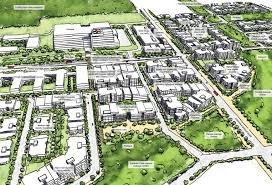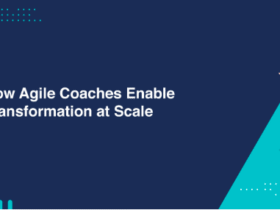Modernization has become a defining goal for organizations seeking to stay relevant in an increasingly cloud-driven world. Every enterprise, whether in finance, retail, healthcare, or manufacturing, is looking to optimize its applications for performance, resilience, and scalability. Yet, the journey is rarely straightforward.
While the benefits of modernization are clear, the execution brings complex trade-offs. Decision-makers must carefully manage cost, ensure airtight security, and maintain delivery speed—all without disrupting business continuity. These priorities often compete with one another, creating a balancing act that demands both technical precision and strategic foresight.
Cloud app modernization is the process of re-architecting legacy systems for the cloud to drive agility, efficiency, and long-term growth. But success isn’t just about migrating to new infrastructure. It’s about finding equilibrium among three critical forces: cost control, security assurance, and speed of delivery.
Understanding the Modernization Trilemma
For most organizations, modernization begins with a strong vision but soon encounters a familiar constraint triangle—where improving one dimension (like speed) may compromise another (like cost or security). Consultants and architects often refer to this as the “modernization trilemma.”
Cost: Controlling the Financial Footprint
Moving to the cloud promises cost efficiency, but without a structured strategy, expenses can spiral out of control quickly. Overprovisioned resources, inefficient workloads, and unmanaged storage can inflate cloud bills. The challenge lies in achieving elasticity—scaling resources up or down as needed—while maintaining predictable costs.
Organizations adopting consumption-based models must also rethink budgeting practices. Traditional capital expenditures are giving way to operational spending, requiring tighter financial governance and continuous monitoring.
Security: Safeguarding the Digital Core
Security remains the most sensitive dimension of modernization. As applications move from on-premises environments to the cloud, the attack surface expands. Each new integration, API, and third-party service introduces potential vulnerabilities.
To manage this, organizations must embed security at every layer—from infrastructure configuration to application logic. Zero-trust architectures, encryption, and automated compliance checks are essential. The most successful teams treat security not as a final gate but as a continuous practice woven into development and deployment cycles.
Speed: Accelerating Delivery Without Sacrifice
Speed often defines the success of modernization. Business leaders want results fast—new features, faster updates, and seamless performance. However, rushing modernization can lead to unstable deployments, technical debt, or security oversights.
Agile methodologies and DevOps pipelines help mitigate these risks. By automating testing, deployment, and monitoring, organizations can accelerate delivery while maintaining stability. The challenge lies in balancing urgency with precision—moving fast, but not recklessly.
Designing a Balanced Modernization Strategy
Finding the right equilibrium requires thoughtful planning and a layered approach that addresses short-term efficiency and long-term resilience.
Start with Business Priorities
Every modernization initiative must start with a clear understanding of business objectives. Is the goal to reduce costs, enhance performance, or improve compliance? Defining measurable success metrics early ensures technology decisions align with outcomes, not assumptions.
Organizations often overemphasize technology choices while underestimating process and people alignment. A balanced strategy ties modernization goals directly to customer value, enabling IT leaders to justify investments and demonstrate ROI effectively.
Modernize in Phases, Not All at Once
Instead of attempting full-scale reengineering, many enterprises adopt a phased approach. This method minimizes risk, allows iterative learning, and helps track cost performance throughout the journey.
For example, starting with “lift-and-shift” migrations for non-critical workloads helps teams build cloud fluency. Once stable, they can move toward refactoring and rearchitecting applications for native cloud capabilities.
Prioritize Automation and Monitoring
Automation is the linchpin that holds speed, cost, and security together. Continuous integration and deployment (CI/CD) pipelines, automated scaling, and AI-based monitoring tools ensure systems remain optimized around the clock.
When properly implemented, automation not only accelerates delivery but also consistently enforces governance policies—reducing both manual effort and the risk of misconfigurations.
Building the Right Team for Modernization Success
People and expertise are key to the success of any modernization initiative. The most advanced tools and platforms will underperform without the right talent to operate them.
At this stage, many organizations choose to hire dedicated remote staff to fill specialized roles such as cloud architects, DevOps engineers, or cybersecurity analysts. Remote experts bring diverse experience from various industries and can integrate seamlessly with in-house teams through cloud collaboration tools.
This hybrid talent model enables companies to scale quickly, remain cost-efficient, and access niche expertise without incurring permanent overhead. It’s a pragmatic solution for organizations that want to modernize fast without stretching internal capacity.
Upskilling In-House Teams
While external experts accelerate transformation, internal enablement ensures sustainability. Continuous learning programs help teams stay current with evolving cloud practices, governance models, and automation frameworks. The combination of in-house ownership and external specialization creates a resilient modernization culture.
Balancing the Three Dimensions in Practice
The interplay between cost, security, and speed isn’t theoretical—it defines the day-to-day reality of modernization.
Optimize Cost Without Cutting Corners
Tools like cloud cost analyzers, auto-scaling, and reserved instance planning can drastically improve cost predictability. However, the real savings come from architectural efficiency—designing applications that inherently consume fewer resources.
Microservices, containerization, and serverless architectures reduce infrastructure overhead by scaling components independently. This approach ensures that cost reductions never come at the expense of performance or reliability.
Build Security into Every Step
Embedding security early in the software development lifecycle (SDLC) prevents vulnerabilities before they surface. Modern DevSecOps practices integrate continuous scanning, access control, and compliance validation directly into pipelines.
Cloud providers now offer native tools for threat detection and identity management, but consultants often recommend layering these with third-party solutions for maximum coverage. Security-by-design should remain a guiding principle—not a checkbox.
Accelerate Responsibly
Speed in modernization should focus on efficiency, not haste. Real-time monitoring and rollback mechanisms help teams deploy confidently, knowing that any issue can be identified and corrected quickly. Incremental releases and automated testing strike the perfect balance between agility and stability.
The Strategic Payoff
When cost, security, and speed align, modernization becomes more than a technology project—it becomes a competitive advantage.
Balanced modernization enables organizations to innovate faster while maintaining compliance, predictability, and customer trust. It also lays the foundation for continuous improvement, where performance insights guide future optimizations and business strategies.
The payoff is not just technical—it’s cultural. Teams evolve from reactive IT management to proactive innovation. Leaders gain the confidence to scale, experiment, and adapt in an ever-changing market landscape.
Conclusion: The Art of Equilibrium
Modernization isn’t a race to the cloud—it’s a deliberate act of balance. Organizations that succeed are those that master the art of aligning their financial, security, and operational priorities into one cohesive strategy.
By approaching app modernization with a focus on equilibrium, enterprises can transform not just their systems, but the way they think about growth. When cost-efficiency, data security, and delivery speed work in harmony, modernization stops being a challenge—and becomes a blueprint for sustainable digital success.
















Leave a Reply